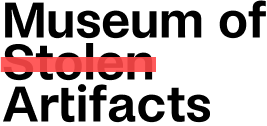Step-by-Step Guide for Restitution
Returning a stolen object to its community of origin is a complex process involving multiple stages and challenges, especially when dealing with international restitution. It requires time, organisation, and cooperation on national and international levels. This guide provides a general step-by-step framework, informed by successful restitution experiences, to help you navigate this journey. Each case is unique, so adapt these guidelines to fit the specific needs of your community. This evolving resource will grow with the contributions and experiences of those who use it, ensuring it remains relevant and effective.
1. Locate
- Gather Information: Collect all details about the object, including names, shapes, stories, and previous locations.
- Resources:
- MoSA database
- Museum databases
- Archival research (community and national records)
- Freedom of Information requests to museums
- MoSA community platform
- Resources:
2. Build a Team
- Identify Key Roles:
- Researcher: Find a skilled detective within your community.
- Diplomat: Find someone with diplomacy skills to engage with the museum.
- Relationship Building: Develop a meaningful relationship with the museum staff beyond the repatriation request.
3. Prioritize
- Focus Efforts: Prioritize the most important artifacts for your community due to the extensive nature of the work.
4. Connect with the Museum
- Initial Contact: Start with small steps like building relationships and requesting information about your object.
- Approach: Express interest as a community member, not as an expert, to gauge the museum’s openness.
- Collaboration: Foster a collaborative relationship to alleviate the museum’s fear of empty galleries.
5. Build a Strong Case
- Documentation:
- Historical records, oral histories, expert testimonies.
- Gather documents that outline the object’s journey and its importance to your community.
6. Understand Legal Frameworks
- Research: Learn the legal frameworks of the country holding your item.
- Resources: Use MoSA resources for documentation about policies and specific country regulations.
7. Build Support and Partnerships
- Alliances: Connect with similar projects and allies through the MoSA platform.
- Local and Global Support: Engage with projects in similar contexts or with the same museums.
- Community Involvement:
- Educational Campaigns: Raise awareness in your community about the importance of the artifacts.
- Stakeholder Meetings: Engage local government, community leaders, and cultural institutions.
8. Send Formal Request for Return of Item
- Formal Letter: Draft a letter outlining the historical context, ownership claims, and the importance of returning the object.
- Template: Use the MoSA template to align with the legal frameworks and language of the country holding the object.
9. Continue the Negotiation
- Persistence: Maintain pressure through your network and community support.
- Tactics: Utilise community support, press, and actions typical of activist campaigns.
10. Physical Return
- Legal Agreement: Aim to secure a legal agreement for the object's return.
- Preparation: Ensure proper arrangements for the object's safe transport.
11. Celebrate and Document
- Ceremonial Return: Plan a ceremony involving community members, officials, and media to mark the return.
- Documentation: Keep detailed records of the entire process to assist others in similar situations.
Additional Resources:
By following these steps and utilising the available resources, communities can navigate the complex process of artifact restitution more effectively. The guide will evolve with shared experiences and feedback from those who engage in these efforts.
